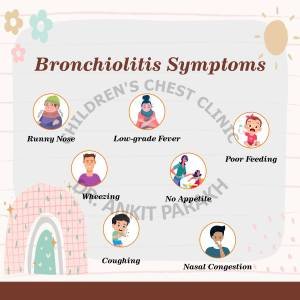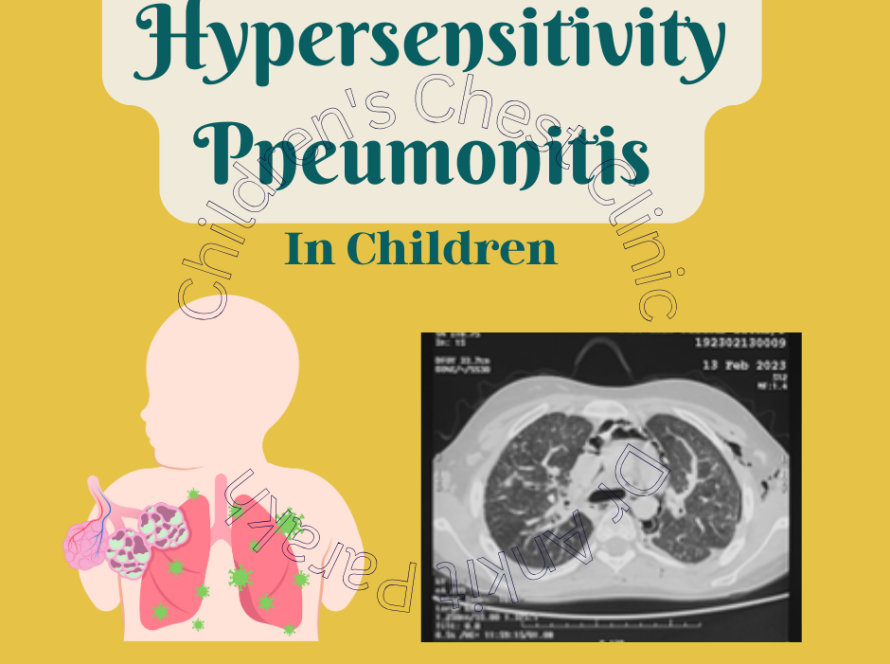Bronchiolitis is a viral respiratory infection of the small airways or bronchioles and most commonly seen in young children between 2 months to 2 years of age. In children with bronchiolitis the small airways get swollen and there is lots of mucus inside. This leads to difficulty in breathing due to impairment of airflow through these blocked airways.
What causes bronchiolitis in children?
Most common virus causing bronchiolitis is the respiratory syncytial virus (RSV). Other viruses that cause bronchiolitis include adenovirus, human metapneumovirus, influenza, and parainfluenza.
What are the symptoms of bronchiolitis in children?
In the initial few days the symptoms of bronchiolitis are like a usual viral infection like runny nose, cold, cough and fever. Later some children can develop fast breathing, difficulty in breathing, retractions in the chest and wheezing.
Some children with bronchiolitis develop serious symptoms requiring urgent medical attention. These could be in the form of poor feeding, dehydration, blue or gray skin, lips and fingernails, very fast breathing with shallow breaths, severe chest indrawing’s, grunting noise while breathing and extreme lethargy.
How is bronchiolitis diagnosed?
Bronchiolitis is diagnosed on clinical symptoms as described. The signs of severity should be carefully seen to decide the requirement of hospital admission. Investigations for identification of the virus requires collection of a small amount of mucus from the back of the nose and throat (nasopharyngeal swab) with a swab. Current methods of detection of the virus are very specific and based on PCR based technology using the viral DNA. Chest x-rays might be helpful in children especially when admitted in the hospital.

How do you treat bronchiolitis in children?
There are no specific treatments for bronchiolitis in children. Antibiotics and cold medicines are not effective in treating bronchiolitis and should be avoided. Most children improve on their own and do not need admission to a hospital. Some infants and children with more severe disease as mentioned above require admission to the hospital, with some children needing ICU care.
The management is usually supportive and includes maintaining good hydration, nasal saline saline drops to keep nasal passages open and paracetamol for fever. Close watch for any signs suggesting worsening of disease is essential. Supplemental oxygen is required in children if the oxygen saturations are less than 92%. Bronchodilators medicines like adrenaline, salbutamol and hypertonic saline are often used in the wards although not very effective. Systemic and nebulized steroids are also not helpful and not recommended.
In case your child is having any symptoms of bronchiolitis you need to get in touch with a paediatric pulmonologist for further care and treatment.






